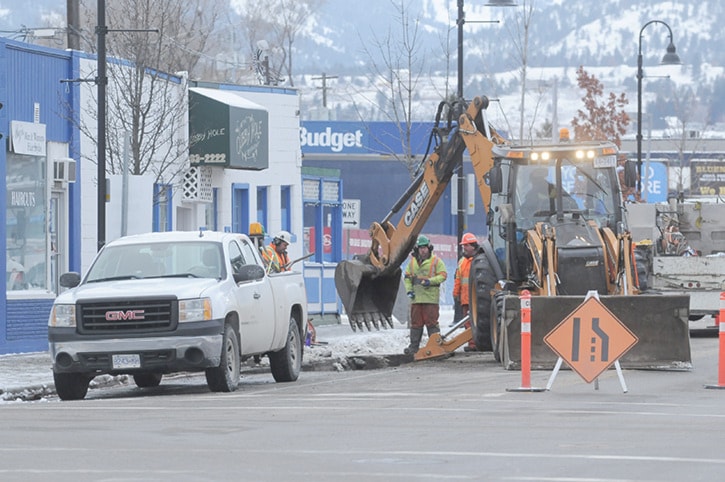Part of the problem with Penticton’s aging infrastructure is knowing exactly how old it is, at least when it comes to the water mains.
A water main break Wednesday on Winnipeg Street forced a partial closure of a block until noon while crews repaired the damage. Mitch Moroziuk, interim CAO and general manager for infrastructure, said the first priority was to complete the repairs, but now they are looking into the history of the pipes.
The problem is conflicting information.
Read more: Hard conchs and a big bill in Penticton's future
“We have records of our infrastructure in certain areas, and other areas we don’t,” said Moroziuk. “That sometimes is an issue municipalities run into with their older stuff.”
Moroziuk said these types of breaks will become more common as the pipes age.
“As you start creeping past the expected service life of water mains, or any infrastructure, you will start to see increases in failure,” he said.
The water main may be more than 50 years old, part of the aging infrastructure that is causing concern for city planners. New water mains were installed on Martin and Main Streets as part of the downtown revitalization project, but there are still aging pipes under the streets.
The lifespan of the water mains, he explained, varies depending on the type of material used. Cast iron, duct iron and asbestos cement would all have varied lifespans.
Read more: Possible new levy coming for Penticton taxpayers
“They’re all different,” said Moroziuk. “It also depends on what the soil conditions are. If they are in what we call ‘hot soil,’ a corrosive soil, it would be less.”
Water mains are just one aspect of the possible $175 million infrastructure deficit Penticton is facing in coming years. The city is also considering a dedicated reserve fund to direct increased spending to the city’s storm sewers.
From 2017 to 2021 the Engineering Department Capital Budget contains six major storm sewer projects along with minor works, expected to cost more than $2 million. That includes the Huth Avenue storm sewer, rainfall monitoring stations, a diversion on Lawrence Street and an upgrade on Dawson Avenue. In 2021, design work begins on a program to replace aging storm sewers.
